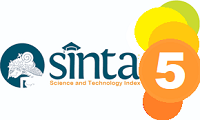Valuasi Ekonomi Malvaceae di Pulau Lombok, Indonesia
DOI:
https://doi.org/10.35134/ekobistek.v13i3.824Keywords:
Biological Resources, Economic Value, Local Community, Nusa TenggaraAbstract
Economic valuation is a calculation of the value of the economic benefits of a resource. Pusuk Lestari is a village in Batulayar District, West Lombok Regency, West Nusa Tenggara Province, Indonesia. This village has a diversity of biological resources, one of which is the Malvaceae family. Until now there has been no study that focuses on the economic value of Malvaceae in Pusuk Lestari Village. Therefore, it is necessary to carry out this research which aims to analyze the economic value of Malvaceae in Pusuk Lestari Village. The research was carried out using purposive sampling through field observations in the form of species identification and population calculations. Then interviews were conducted with local communities regarding utilization, productivity and periodicity of the harvest period and then the value of the economic benefits was calculated and analyzed descriptively. Based on identification, there are five species of Malvaceae family in Pusuk Lestari Village, namely: Hibiscus rosa-sinensis, Hibiscus schizopetalus, Hibiscus sabdariffa, Hibiscus tiliaceus, and Durio zibethinus. These five species are economically valuable plants with a total direct economic value of IDR 4,165,888,000.00.
References
Pemerintah Kabupaten Lombok Barat. (2023). Kecamatan Batulayar Dalam Angka 2023. Gerung: Pemerintah Kabupaten Lombok Barat.
Antara, D.M.S., Suarta, I.K., Amalia, L.F., Puspita, N.P.L.A. & Dewi, N.W.S. (2023). Peningkatan Kapasitas SDM Pengelola Desa Wisata dan Penataan Desain Jalur DTW di Desa Pusuk Lestari Kabupaten Lombok Barat. Journal of Human and Education, 3 (2), 440-449. https://doi.org/10.31004/jh.v3i2.270
Christenhusz, M.J.M. & Byng, J.W. (2016). The number of known plants species in the world and its annual increase. Phytotaxa, 261 (3), 201–217. https://10.11646/PHYTOTAXA.261.3.1
Masnadi. (2019). Keanekaragaman Family Malvaceae Di Hutan Taman Eden 100 Sebagai Bahan Perangkat Pembelajaran Biologi. Best Journal (Biology, Education, Science, and Technology), 2 (2), 32-41. https://doi.org/10.30743/best.v2i2.1816
Andriansyah, F. Sustya, A., Wiryono, Brata, B. & Yurike. (2023). Valuasi Ekonomi dan Pengembangan Obyek Wisata Hutan Mangrove Kampung Nelayan Sejahtera Kelurahan Sumber Jaya Kota Bengkulu. Naturalis-Jurnal Penelitian Pengelolaaan Sumber Daya Alam dan Lingkungan, 12 (1): 41-48. https://doi.org/10.31186/naturalis.12.1.27004
Ridwansyah, M. (2023). Valuasi Ekonomi Sumber Daya Alam: Penerapan pada Sstem Agroforestri. Yogyakarta: Aci Edukasi.
Jabbar, A., Nusantara, R.W. & Akbar, A.A. (2021). Valuasi Ekonomi Ekosistem Mangrove Berbasis Ekowisata pada Hutan Desa di Kecamatan Batu Ampar Kalimantan Barat. Jurnal Ilmu Lingkungan, 19 (1), 140-152. https://doi.org/10.14710/jil.19.1.140-152
Zulkarnaen, A., Rukmana, D. & Fatmawati. (2023). Valuasi Ekonomi Hutan Mangrove Di Kawasan Teluk Palu Pasca Tsunamai (Studi Kasus: Hutan Mangrove Kecamatan Banawa Kabupaten Donggala, Provinsi Sulawesi Tengah). Seiko: Journal of Management and Business, 6 (1), 345-354. https://doi.org/10.37531/sejaman.v6i1.3655
Rosmawati, Haris, A., Nurdiana, A., Piliana, W.A., Hamzah, M. & Sidiq, A. (2023). Kajian Nilai Manfaat Langsung Ekosistem Mangrove Di Desa Moko Kecamatan Lakudo Kabupaten Buton Tengah Sulawesi Tenggara. Jurnal Sosial Ekonomi Perikanan, 8 (1), 1-10. https://doi.org/10.33772/jsep.v8i1.10
Mando, L.O.A.S, Kandari, A.M., Kasim, S., Midi, L.O. & Nurgiantoro. (2022). Valuasi Ekonomi Dan Desain Lanskap Kawasan Wisata Alam Mangrove Di Kelurahan Lahundape Kota Kendari. Makila: Jurnal Penelitian Kehutanan, 16 (1), 1-19. https://doi.org/10.30598/makila.v16i1.5186
Arivukkarasu, D. & Sathyanathan, R. (2024). Evaluating The Potential of Hibiscus Rosa-Sinensis in Floating Wetland for The Remediation of Water Bodies Polluted with Domestic Sewage. International Research Journal on Advanced Engineering and Management, 2 (4), 598-608. https://doi.org/10.47392/IRJAEM.2024.0083
Magdalita, P.P. & Pascual, A.O.S. (2022). Hibiscus (Hibiscus rosa-sinensis): Importance and Classification. In: Datta, S.K., Gupta, Y.C. (eds) Floriculture and Ornamental Plants. Handbooks of Crop Diversity: Conservation and Use of Plant Genetic Resources. Springer, Singapore. https://doi.org/10.1007/978-981-15-3518-5_18
El-Shiekh, R.A, Abdelmohsen, U.R., Ashour, H.M., & Ashour, R.M. (2020). Novel Antiviral and Antibacterial Activities of Hibiscus schizopetalus. Antibiotics, 9 (11), 756. https://doi.org/10.3390%2Fantibiotics9110756
Nadzifah, B.K., Arganata, F.D., Sulistiono, & Rahmawati, I. (2024). Karakterisasi Morfologi Bunga Sepatu Gantung (Hibiscus schizopetalus). Seminar Nasional Sains, Kesehatan, dan Pembelajaran 3, 212-219. https://proceeding.unpkediri.ac.id/index.php/seinkesjar/article/view/4513
Lubis, L., Dewi, G.T., Supriyan, A.N.D., Aprinaldi, Purba, A., & Diantini, A. (2024). Roselle (Hibiscus sabdariffa L.) calyces tea improves physical fitness of healthy adults. Biomedical Reports, 20, 49. https://doi.org/10.3892/br.2024.1737
Kellou, K.K.B., Abdourazak, M.A., Boukar, M.C.M., Saley, M.D., Sanoussi, A., & Yacoubou, B. (2024). Roselle (Hibiscus Sabdariffa L.): Overview of Its Biology, Ecology, Socio-Economic Importance and Cultivation Constraints In West Africa. World Journal of Pharmaceutical and Life Sciences, 10 (3), 47-56. https://www.wjpls.org/home/article_abstract/3227
Mardiah, S., Dharmono, & Utami, N.H. (2022). Etnobotani Hibiscus tiliaceus Pada Masyarakat Dayak Bakumpai Desa Bagus Kabupaten Barito Kuala. Jurnal Bioshell, 11 (1), 142-150. https://repo-dosen.ulm.ac.id//handle/123456789/33702
Supomo, H., Rahman, A., & Baihaqi, I. (2021). Technical and economic analysis on the using of Hibiscus Tiliaceus (Waru) and Boehmeria Nivea (Rami) fibres for fishing vessel mooring rope. IOP Conf. Series: Earth and Environmental Science, 649, 012054. https://doi.org/10.1088/1755-1315/649/1/012054
Tran, T.H., Le, T.H.T., Pham, N.T.D., Tran, B.L., Pham, D.M.T., Hoang, Q.B. (2024). Evaluation of factors affecting the freeze-dried process of durian (Durio zibethinus L.). Food Research, 8 (2), 508-515. https://doi.org/10.26656/fr.2017.8(2).346
Ketsa, S. (2018). Durian (Durio zibethinus). In: Rodrigues, S., Silva, E.d.O, & de Brito, E.S. (eds) Exotic Fruits Reference Guide. Elsevier Inc., London. https://doi.org/10.1016/B978-0-12-803138-4.00022-8
Dinas Kehutanan Provinsi Nusa Tenggara Barat. (2017). Sensasi Wisata Durian di Desa Setiling. Mataram: Dinas Kehutanan Provinsi Nusa Tenggara Barat. https://dislhk.ntbprov.go.id/wp-content/uploads/2017/05/LEAFLET-hhbk-durian.pdf
Downloads
Published
How to Cite
Issue
Section
License
Copyright (c) 2024 Jurnal Ekobistek

This work is licensed under a Creative Commons Attribution 4.0 International License.





